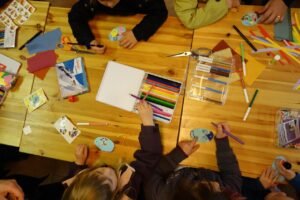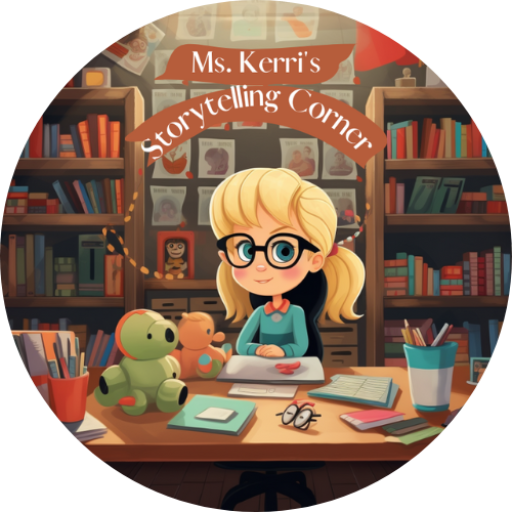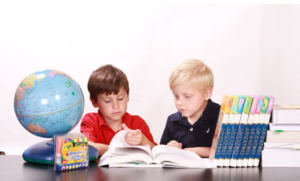Sensory activities are a crucial part of a child’s development as they help to stimulate their senses and promote cognitive and emotional growth. By engaging in sensory activities, children can explore the world around them, develop their fine and gross motor skills, enhance their creativity, and improve their ability to problem-solve and regulate their emotions. In this article, we will explore a variety of sensory activities that are perfect for every season, allowing young minds to thrive and flourish through the senses.
Key Takeaways
- Sensory activities promote cognitive and emotional development in children.
- Engaging in sensory activities helps children develop their fine and gross motor skills.
- Sensory activities enhance creativity and problem-solving abilities.
- Exploring the senses through different seasons allows children to connect with nature.
- Sensory activities provide opportunities for children to regulate their emotions.
Why Sensory Activities are Important for Young Minds

The Benefits of Sensory Activities
Hands-on sensory activities greatly contribute to nurturing young minds as they grow and develop. They provide opportunities for children to engage their senses and explore the world around them. By stimulating the senses, sensory activities help children build neural connections in their brains, which are essential for learning and cognitive development. These activities also promote creativity and imagination, as children are encouraged to use their senses to discover new things and express themselves.
How Sensory Activities Support Cognitive Development
This play a crucial role in supporting cognitive development in young minds. By engaging the senses, children are able to make connections between what they see, hear, touch, taste, and smell, and the world around them. This multisensory experience helps to strengthen neural pathways and enhance brain development. Sensory activities provide opportunities for children to explore and manipulate objects, solve problems, and engage in imaginative play, all of which are important for developing cognitive skills.
Ways Sensory Activities Enhance Emotional Well-being
Engaging in sensory activities can have a profound impact on a child’s emotional well-being. By stimulating the senses, these activities help children develop a greater awareness and understanding of their emotions. Exploring different textures, listening to calming sounds, and engaging in soothing scents can all contribute to a sense of calm and relaxation. These activities provide a safe and nurturing environment for children to explore and express their feelings.
Sensory Activities for Spring

Exploring Nature through the Senses
Nature is a treasure trove of sensory experiences waiting to be discovered by young minds. Exploring the natural world through the senses not only stimulates curiosity but also fosters a deeper connection with the environment. By engaging in sensory activities outdoors, children can develop a greater appreciation for the beauty and wonders of nature.
One way to encourage sensory exploration is through a nature scavenger hunt. Create a list of items for children to find, such as smooth rocks, fragrant flowers, or interesting leaves. As they search for these treasures, they can touch, smell, and observe the different textures, scents, and colors. This activity not only engages their senses but also encourages observation skills and attention to detail.
Another way to engage with nature is through nature-inspired art. Encourage children to collect natural materials like leaves, twigs, and flowers, and use them to create artwork. They can make leaf rubbings, create collages, or even paint with natural pigments. This not only allows them to explore different textures and colors but also encourages creativity and imagination.
In addition to these activities, it’s important to take the time to simply be present in nature. Encourage children to sit quietly and observe their surroundings. They can listen to the sounds of birds chirping, feel the breeze on their skin, and watch the movement of leaves in the wind. This mindful experience allows them to fully immerse themselves in the sensory delights of nature and develop a sense of calm and tranquility.
 https://direct.me/mskerriscorner
https://direct.me/mskerriscorner
Creating Sensory Gardens
Creating sensory gardens is a wonderful way to engage young minds with nature and stimulate their senses. Gardens provide a rich sensory experience, allowing children to explore various textures, scents, colors, and sounds. By involving children in the process of creating a sensory garden, they can develop a deeper connection with nature and gain a sense of ownership and pride.
One way to create a sensory garden is by incorporating plants with different textures. Soft, velvety leaves of lamb’s ear, rough bark of tree trunks, and smooth petals of flowers offer a tactile experience for children to touch and feel. Encourage children to describe the textures they encounter and discuss how they make them feel.
Another element to consider in a sensory garden is scent. Fragrant flowers like lavender, roses, and jasmine can fill the air with delightful aromas. Invite children to take deep breaths and identify the different scents they encounter. This can help them develop their sense of smell and create positive associations with nature.
In addition to textures and scents, a sensory garden can also incorporate visual elements. Brightly colored flowers and vibrant foliage can capture children’s attention and stimulate their visual senses. Encourage children to observe the colors and patterns they see and discuss their preferences.
Creating a sensory garden provides endless opportunities for learning and exploration. It allows children to engage their senses, develop their observation skills, and foster a love for nature. So grab your gardening tools and get ready to create a sensory garden that will nourish young minds through the senses!
Spring-themed Sensory Bins
After exploring nature through the senses and creating sensory gardens, another exciting sensory activity for spring is Spring-themed Sensory Bins. These bins are filled with various materials that stimulate the senses and encourage imaginative play. Children can explore different textures, colors, and scents as they engage in sensory bin play. It provides an opportunity for them to develop their fine motor skills, language skills, and cognitive abilities. They can sort, scoop, pour, and manipulate the materials in the bin, enhancing their hand-eye coordination and problem-solving skills. Spring-themed sensory bins can include items like dried flowers, grass, seeds, small gardening tools, and toy animals. It’s a wonderful way to bring the beauty of spring indoors and create a sensory-rich environment for young minds to thrive.
Sensory Activities for Summer

Water Play and Sensory Exploration
Water play and sensory exploration is a fantastic way to keep kids cool and engaged during the hot summer months. Water is a versatile sensory material that provides endless opportunities for learning and fun. Whether it’s splashing in a pool, running through a sprinkler, or playing with water toys, children can explore different textures, temperatures, and movements. This sensory experience stimulates their senses and promotes their cognitive development.
Outdoor Sensory Art
Outdoor Sensory Art is a fantastic way to engage children in creative expression while stimulating their senses. By using natural materials such as leaves, flowers, and rocks, children can explore different textures, colors, and shapes. They can create beautiful artwork by arranging these materials in patterns or designs. This activity not only encourages sensory exploration but also promotes fine motor skills and hand-eye coordination. It allows children to connect with nature and appreciate the beauty around them.
Sensory Science Experiments
After exploring nature through the senses and creating sensory gardens, it’s time to dive into the world of Sensory Science Experiments. This is a great opportunity for young minds to engage in hands-on learning and discover the wonders of science. By combining sensory play with scientific concepts, children can develop their cognitive skills while having fun.
Here are a few exciting sensory science experiments to try:
- Fizzing Colors: Fill a tray with baking soda and add drops of food coloring. Then, pour vinegar into a spray bottle and let your child spray it onto the baking soda. Watch as the colors fizz and mix together, creating a mesmerizing visual display.
- Magic Milk: Pour a shallow layer of milk into a tray and add drops of different food coloring. Then, dip a cotton swab into dish soap and touch it to the milk. Watch as the colors swirl and dance, creating beautiful patterns.
- Oobleck Exploration: Mix cornstarch and water to create a gooey substance called oobleck. Let your child explore the oobleck by squishing it, squeezing it, and observing its unique properties. Discuss concepts like viscosity and non-Newtonian fluids.
These sensory science experiments not only stimulate the senses but also encourage curiosity, critical thinking, and problem-solving skills. They provide a hands-on approach to learning scientific concepts and foster a love for exploration and discovery.
Sensory Activities for Autumn

Fall Sensory Walks
Fall is a wonderful time to engage in sensory walks with young children. Exploring the outdoors during this season allows them to experience the vibrant colors, crisp air, and unique textures that autumn brings. It is a great opportunity to stimulate their senses and foster a deeper connection with nature.
Harvest Sensory Play
Harvest sensory play is a wonderful way to engage young minds in the wonders of the autumn season. It provides children with the opportunity to explore and experience the textures, colors, and scents of the harvest season. Through sensory play, children can develop their fine motor skills, creativity, and cognitive abilities. Autumn is a time of abundance, and sensory play allows children to connect with nature and learn about the different fruits, vegetables, and grains that are harvested during this season. Here are some ideas for harvest sensory play:
- Create a sensory bin filled with dried corn kernels, small pumpkins, and colorful leaves. Children can use their hands to explore the different textures and shapes.
- Set up a sensory table with various fruits and vegetables. Children can touch, smell, and even taste the different produce.
- Use natural materials like hay, straw, and pinecones to create a sensory play area. Children can use their imagination to build and create with these materials.
 https://direct.me/mskerriscorner
https://direct.me/mskerriscorner
Incorporating harvest sensory play into your child’s routine can provide them with a rich sensory experience and help them develop important skills. It’s a fun and educational way to celebrate the autumn season!
Sensory Cooking with Seasonal Ingredients
Sensory cooking is a fantastic way to engage young minds and explore the world of food. By using seasonal ingredients, children can not only learn about different flavors and textures but also develop an appreciation for nature’s bounty. Cooking with fresh produce from the garden or local farmers’ market is a wonderful opportunity to teach children about sustainability and the importance of supporting local communities. It also encourages them to make healthy food choices and understand the impact of their food choices on the environment.
Sensory Activities for Winter

Winter Sensory Bins
Winter is a magical season that provides unique opportunities for sensory exploration. Snow and ice are the stars of the show, offering a variety of textures and sensations for young minds to discover. Winter sensory bins are a fantastic way to engage children in hands-on play while stimulating their senses.
In a winter sensory bin, you can include materials such as fake snow, cotton balls, ice cubes, and small winter-themed objects. Encourage children to use their sense of touch to explore the different textures and temperatures. They can feel the coldness of the ice, the softness of the cotton balls, and the crunchiness of the fake snow.
Here are some ideas for winter sensory bins:
- Arctic Adventure: Fill the bin with fake snow, plastic animals, and small icebergs. Children can create their own Arctic scenes and engage in imaginative play.
- Winter Wonderland: Use cotton balls, silver glitter, and small winter-themed figurines to create a magical winter landscape.
- Ice Exploration: Freeze small objects, such as toy cars or plastic animals, in ice cubes. Children can use warm water to melt the ice and discover the hidden treasures inside.
Winter sensory bins provide a sensory-rich experience that promotes creativity, fine motor skills, and cognitive development. They also offer a calming and soothing effect, which can be especially beneficial during the colder months. So bundle up and get ready for some winter sensory fun!
Snow and Ice Sensory Play
Snow and ice sensory play is a wonderful way to engage young minds during the winter season. Exploring the different textures and temperatures of snow and ice can provide a unique sensory experience. Children can feel the coldness of the snow and the slippery surface of the ice, stimulating their sense of touch. They can also observe the changes that occur when snow and ice melt, introducing them to the concept of states of matter. Experimenting with different tools and materials, such as scoops, containers, and food coloring, adds an element of creativity to the sensory play. It allows children to manipulate and transform the snow and ice, fostering their fine motor skills and imagination.
 https://direct.me/mskerriscorner
https://direct.me/mskerriscorner
Sensory Storytelling by the Fireplace
Winter is a magical time for sensory exploration. As the temperature drops and snowflakes fall, children can engage their senses in a variety of ways. Snow and ice provide unique textures and sensations that can stimulate touch and proprioception. Encourage children to feel the coldness of the snow and the slippery surface of ice. They can also explore the different shapes and patterns of snowflakes, fostering visual perception.
Sensory storytelling by the fireplace is a cozy and immersive activity for winter. Gather around the warm glow of the fire and let your imagination run wild. Use props, such as blankets, pillows, and stuffed animals, to create a comfortable and inviting space. As you read a winter-themed story, incorporate sensory elements to enhance the experience. For example, you can use scented candles or essential oils to evoke the smell of pine trees or hot cocoa. The crackling sound of the fire adds an auditory dimension to the storytelling.
To further engage the senses during winter, you can set up winter-themed sensory bins. Fill a bin with fake snow, pinecones, and small winter-themed objects. Children can explore the different textures and temperatures of the materials, as well as practice fine motor skills by scooping and pouring. Add some winter-themed toys or figurines to encourage imaginative play and storytelling.
Winter is a season full of sensory opportunities. By incorporating sensory activities into your winter routine, you can provide children with enriching experiences that stimulate their senses and promote cognitive and emotional development.
Looking for fun and engaging activities to do with your kids this winter? Look no further! At Ms. Kerri’s Story Telling Corner, we have a wide range of sensory activities that will keep your little ones entertained and stimulated. From sensory bins filled with snow and ice to winter-themed sensory crafts, we have something for everyone. Our activities are designed to promote sensory exploration, creativity, and learning. Visit our website today to discover the endless possibilities of sensory play this winter!
Conclusion
In conclusion, sensory activities are a fantastic way to engage and nourish young minds through the senses. Whether it’s exploring nature in the spring, creating sensory bins in the summer, enjoying cozy sensory experiences in the fall, or engaging in hands-on crafts in the winter, there are endless opportunities to stimulate children’s senses and promote their cognitive development. So, why not incorporate these activities into your daily routine and watch your child’s imagination soar? Let’s embark on this sensory journey together and create unforgettable memories with our little ones!
 https://direct.me/mskerriscorner
https://direct.me/mskerriscorner
Frequently Asked Questions
What are sensory activities?
Sensory activities are activities that engage the senses, such as touch, sight, smell, taste, and hearing, to stimulate and develop young minds.
Why are sensory activities important for young minds?
Sensory activities are important for young minds as they promote cognitive development, enhance emotional well-being, and provide opportunities for exploration and learning.
How do sensory activities support cognitive development?
Sensory activities support cognitive development by stimulating the brain, improving sensory processing skills, enhancing memory and attention, and promoting problem-solving and critical thinking abilities.
What are some examples of sensory activities for spring?
Some examples of sensory activities for spring include exploring nature through the senses, creating sensory gardens, and engaging in spring-themed sensory bins.
What are some sensory activities for summer?
Some sensory activities for summer include water play and sensory exploration, outdoor sensory art, and sensory science experiments.
What are some sensory activities for autumn?
Some sensory activities for autumn include fall sensory walks, harvest sensory play, and sensory cooking with seasonal ingredients.
 https://direct.me/mskerriscorner
https://direct.me/mskerriscorner

Ms. Kerri’s Corner provides a exciting virtual space for preschool learning. Through a variety of engaging activities, she exposes young minds to early math, literacy, science and social-emotional skills in a developmentally appropriate way. Centers for blocks, art, books and music allow children to explore hands-on learning at their own pace. Guided lessons subtly introduce number sense, letter sounds and narrative thinking. Careful observation gives insight into each child’s progress across domains. Viewers are also invited to participate, reinforcing that their ideas are valued. By making learning fun yet purposeful, Ms. Kerri lays the groundwork for future academic success while fostering creativity and imagination. Her program offers preschoolers valuable screen-based learning experiences.




